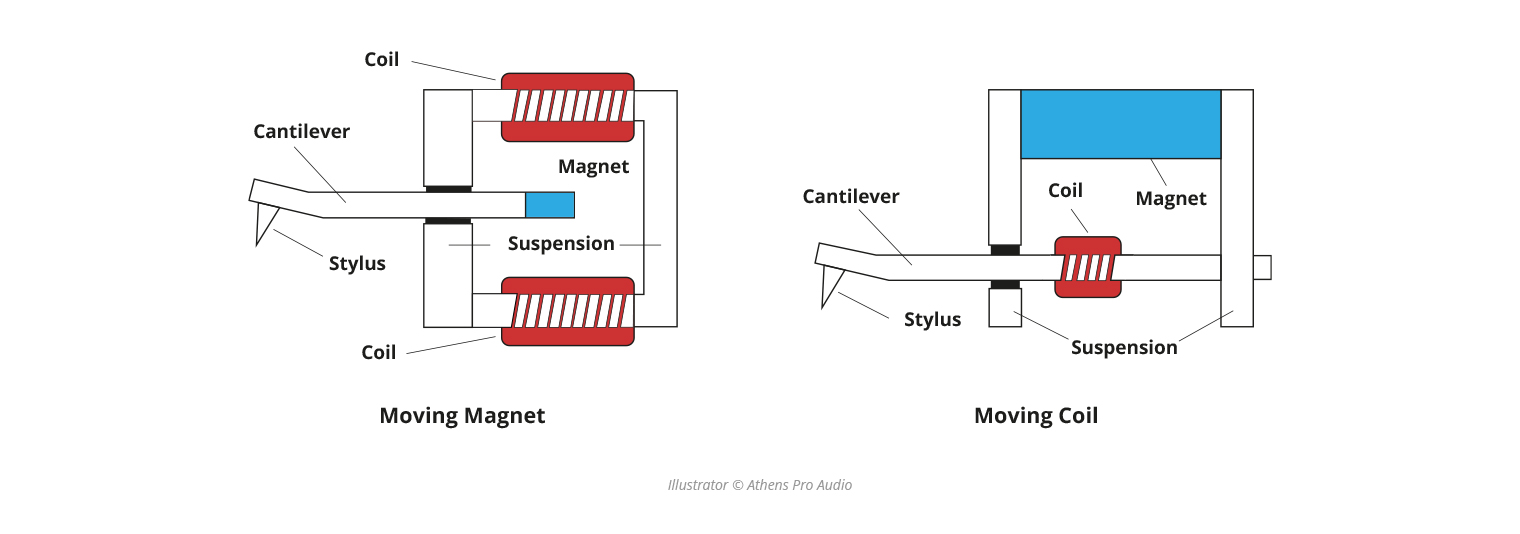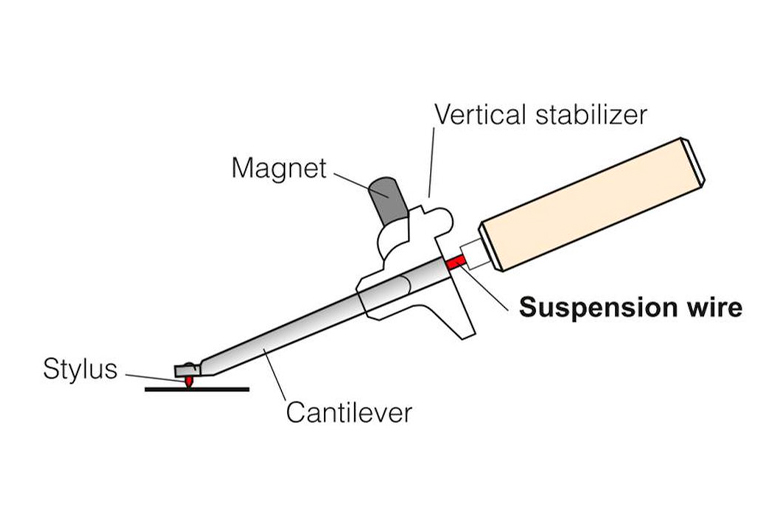Turntable cartridge upgrade
A guide to enhancing your listening experience.
Upgrading your turntable cartridge can significantly enhance your listening experience by improving the sound quality produced by the source, as well as its clarity and fidelity. A high-quality cartridge can reproduce music with greater accuracy, capturing subtle details and nuances in the music that a lower-quality cartridge might miss. Additionally, upgrading your cartridge can breathe new life into your vinyl collection, allowing you to rediscover your favorite albums with a fresh perspective.

Whether you are a casual listener or a demanding audiophile vinyl enthusiast seeking the best possible sound, such an upgrade can elevate your listening experience to a new level. However, it is a technical process that requires an understanding of the basic principles of how a turntable cartridge works and the characteristics that make it ideal for your specific system. In this guide, we will examine the technical features that should be seriously considered when upgrading a turntable cartridge.
Key features of a turntable cartridge
The turntable cartridge is the most crucial part of a vinyl playback system, as it is responsible for converting the analog data from the record into an electrical signal.
The Stylus

The stylus is where the magic begins, as it reads the information from the grooves of a record and transmits it through the cartridge and your sound system. Styluses are made from diamond – one of the hardest materials available. This means they don't wear easily from the pressure they endure while reading the information stored in the grooves of the record. The precision and quality of the material affect the cartridge's performance.
Types of stylus
In general, there are three main types of stylus shapes that are formed from diamond to enable the reading of a record:
Spherical (conical)
The most common stylus shape and usually the most economical. It is the easiest to manufacture but also means that it has the least contact with the grooves of the record. As a result, the stylus collects less information and applies more pressure to specific points of the groove it touches, potentially causing faster wear on your record.

Elliptical Stylus
These styli have a smaller diameter and are usually polished, allowing for better tracking of the grooves. This means more information is collected, and less pressure is applied to a specific point within the grooves. They are more precise but typically come at an affordable price.

Fine-Line Stylus
These are the most expensive types of styli, usually used in high-end systems with a higher cost. They consist of an ultra-polished tip with a shape that allows contact with a larger part of the record's groove. This means Fine-Line styli collect the most information while applying the least pressure.

Other types include Shibata, MicroRidge / MicroLine, and Jico SAS.
Note: Until 1977, the tips of turntable needles were made from real, natural diamonds. After that, industrial diamonds appeared. Although lab-created and chemically identical in structure to natural diamonds, it is said that synthetic diamonds are slightly less durable than natural diamonds.
Types of Cartridges
Moving Magnet (MM)
In a Moving Magnet cartridge, the movements created by the stylus reading the grooves of the record are transferred through the cantilever. With its movements controlled by the internal suspension system, a magnet is placed at the end of the cantilever. So, when the stylus moves, the magnet moves as well. The movement of the magnet and the current interact with fine coils of wire positioned close by inside the cartridge, generating a voltage. This creates an electric current that is then transmitted through the turntable's tonearm to the rest of the system via connected cables. This current is amplified and ultimately produces the audio output that reaches your speakers. MM cartridges are usually more affordable and easier to maintain.

Moving Coil (MC)
Moving Coil cartridges operate in a very similar way, but the roles of the magnet and the coil are essentially reversed. In these types of cartridges, instead of the magnet moving when the stylus reads the grooves, the wire coils move instead. This is considered a more efficient and effective way to convert movement into an electrical signal because the wire coils are lighter than the magnet, allowing for smoother movement. The electric signal for MC cartridges is sent to the rest of the system in the same way as for MM cartridges. Moving Coil cartridges are typically more expensive than Moving Magnet cartridges due to the more sensitive and precise manufacturing process. They usually offer higher sound quality but are more costly and require more careful setup.
Cantilever
The cantilever of the cartridge is a critical part of a turntable cartridge that connects the stylus to the magnetic system or the wire coils inside the cartridge. The role of the cantilever is to transfer the vibrations of the stylus, as it reads the grooves of the record, to the magnetic system or the coils, so they can be converted into an electrical signal.
Key Elements of the Cartridge Cantilever
Material: The cantilever can be made from various materials, such as aluminum, steel, or carbon fiber. The material affects the strength, sensitivity, and response of the cartridge.
Length: The length of the cantilever affects the accuracy of reproducing the record grooves. A longer length can provide better performance in some cases, while a shorter length may be preferable in others.
Design: The design of the cantilever can impact the overall sensitivity and response of the cartridge. It must be properly aligned to ensure accurate sound reproduction.
Function: The cantilever transfers the vibrations of the stylus to the magnetic system or wire coils, which in turn convert these vibrations into an electrical signal. A well-tuned and well-crafted cantilever ensures better accuracy and sound quality.

The quality and design of the cantilever are essential for the performance of the turntable cartridge and, consequently, for the sound quality that is reproduced.
Sensitivity and Resistance
Sensitivity: Refers to the cartridge's ability to handle small vibrations and irregularities of the record, influencing the clarity of the sound.
Resistance: The resistance of the system affects how well the cartridge integrates with the preamp and the overall sound performance.
Balance and Weight Management
Weight Management: Proper balance of the cartridge’s weight is crucial to avoid excessive wear on the record and to maintain sound quality.
Alignment Adjustment: Most cartridges allow alignment adjustment for improved performance and more accurate sound reproduction.
Build Quality and Energy Distribution
Build and Materials: The build quality and materials used affect the lifespan and performance of the cartridge.
Choosing the right turntable cartridge depends on personal preferences, the type of sound you desire, and the type of audio system you are using.
Identifying your needs

Before upgrading the cartridge, it’s important to understand your system’s requirements and your listening preferences.
For example:
• Compatibility: Ensure that the new cartridge is compatible with your tonearm and preamp. Some MC cartridges require special preamps with adjustable gain settings.
• Tonal Balance: If you prefer a sound with richer bass or more clarity in the treble, choose a cartridge that emphasizes these frequencies.
• Listening Style: If you enjoy listening to classical music or jazz, you might prefer a cartridge that highlights detail and clarity. For rock or pop music, a cartridge with a more balanced sound may be a better choice.
Technical Specifications to Consider
Upgrade and Setup Process
Upgrading your turntable cartridge may seem straightforward, but proper setup is crucial for performance:
• Installation: Carefully follow the manufacturer's instructions to mount the cartridge on the turntable's tonearm. Use a specialized alignment tool to ensure the stylus is correctly positioned in the record groove.
• Adjusting Tracking Force and Anti-Skate: These adjustments are vital to avoid excessive wear on both the record and the cartridge. The tracking force should match the cartridge's specifications.
• Testing and Listening: After installation, listen to a few records you are familiar with to evaluate the new cartridge. You may need to make further adjustments to achieve the ideal sound.
For all of the above, installation and the required adjustments are best carried out by professional technicians who possess both the knowledge, experience, and the appropriate tools.
Final thoughts and advice
Changing the cartridge of your turntable can have a significant impact on the sound quality you hear, and the correct selection and installation of the new cartridge is crucial.
Here are some final thoughts and tips to help you through the process:
Research and advice: Explore the available options by reviewing comparative articles or analyses, listen to friends who love vinyl, and most importantly, seek recommendations from specialized stores like Athens Pro Audio, where professional musicians and technicians can guide you.
Quality and price: Turntable cartridges range in price from a few hundred to thousands of euros. The price often reflects quality, but the most expensive cartridge isn't always the best choice for every system. Consider your needs and budget before deciding.
Installation: Carefully follow the manufacturer's instructions for installing the new cartridge. Proper installation is critical to avoid damage and to achieve optimal performance.
Tracking Force Adjustment: Ensure that the tracking force is set according to the specifications of your cartridge. Correct adjustment is essential to avoid excessive wear on both the record and the cartridge.
Familiarizing yourself with the new setup: After installation, listen to some records you know well to evaluate the performance of the new cartridge. You may need to make further adjustments to achieve the ideal sound quality.
By following the above steps, you can ensure that your new turntable cartridge will provide improved performance and contribute to a better overall listening experience.
Happy listening!
The Athens Pro Audio team is always at your disposal to guide and inform you on all technical and non-technical matters, helping you choose the right cartridge for your turntable.
AthensProAudio Team ©




